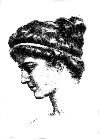

| 1. | Theon of Alexandria's commentary on the third (book) of the Mathematical syntaxis of Ptolemy begins with, "the edition having been prepared [paranagnostheisa] by the philosopher, my daughter Hypatia." Knorr thought that Rome did not find conclusive stylistic variations because the literal translation of [paranagnostheisa] is "reading along" instead of "prepared". He found the same term used for Eutocius' commentary on Archimedes, and compared this to a second Archimedes version. Eutocius had aded new paragraphs, and modified others, but the text was mostly unaltered. So, Knorr looked for sections of Book III distinct from the rest of the commentary and from the other Books, and found a section on sexigesimals that he attributes to Hypatia. in Book I, a sexigesimal computation was done very differently than in Book III - instead of using a chart, a method of long division for sexagesimals was used to find successive quotients by trial one digit at a time. The answer found was an approximation, as opposed to the precise answer found in Book III by the table method. | |
| 2. | In the 10th century Suda Lexicon, it said that "She (Hypatia) wrote a commentary on Diophantus, the Canon of Astronomy, a commentary on the conics of Apollonius, and Archimedes Dimension of the Circle". | |
| 3. | There is no historical evidence that Hypatia worked on Archimedes Dimension of the Circle, but it is interesting to speculate. Knorr finds stylistic similarities in Archimdes Dimension of the Circle that he the attributes to Hypatia. | |
| 4. | We know that Hypatia was a mathematician, but we don't know for certain exactly what she worked on. | |
| 5. | In Archimedes dimension of the circle proof, they did know the area of a right triangle, but not of a circle. | |
| 6. | As the number of sides gets large, the area of a polygon inscribed in a circle does not approach the area of the circle. | |
| 7. | If B and C are adjacent vertices (forming an edge) of a polygon inscribed in a circle with center A, then BC is less than the length of the arc of the circle corresponding the angle BAC because the shortest distance between two points (in Euclidean geometry) is a line. | |
| 8. | If B and C are adjacent vertices (forming an edge) of a polygon inscribed in a circle with center A, and K is the midpoint of BC, then AK is perpendicular to BC because of the setup and SSS. | |
| 9. | Grinstein's (light blue) book is a good, reputable resource on Hypatia, but Osen's (green) book is not since it quotes Hypatia's words (which we don't have), and gives other misleading information based on a paper that was a fictional account of Hypatia. |